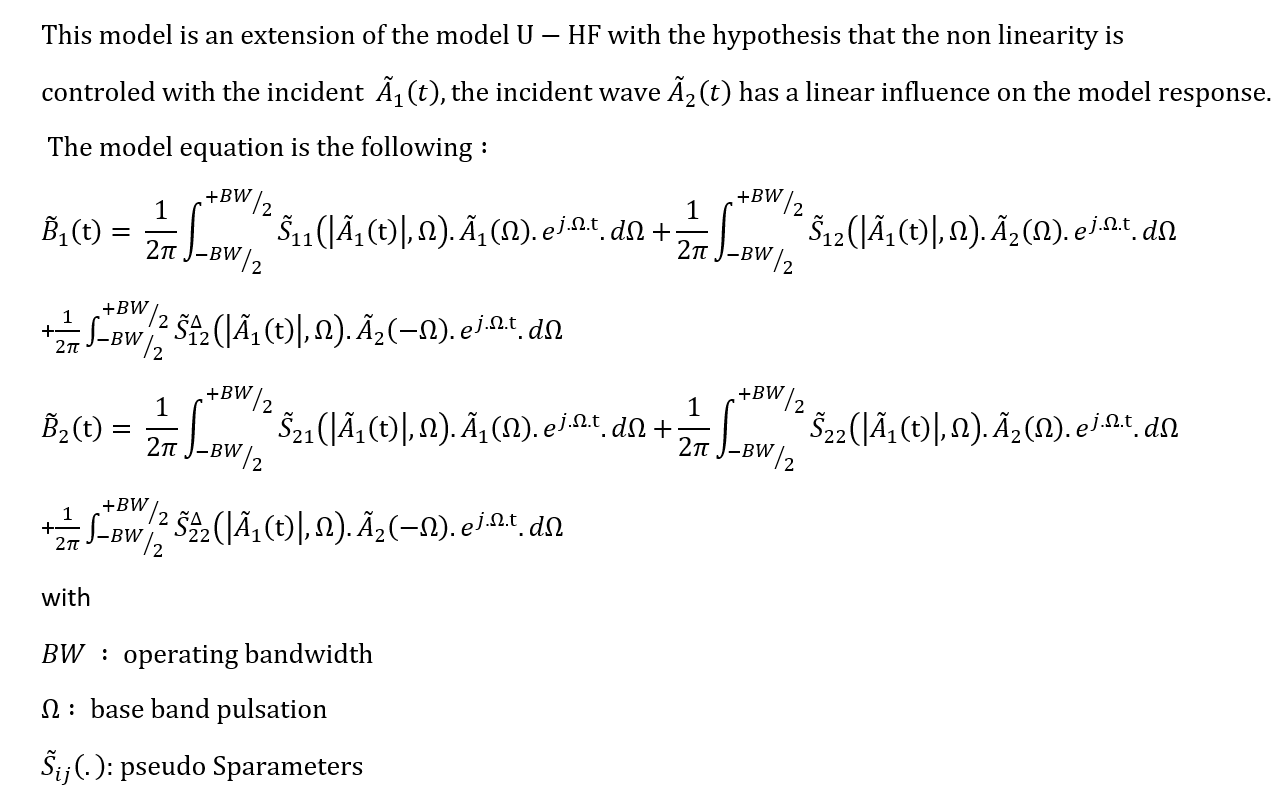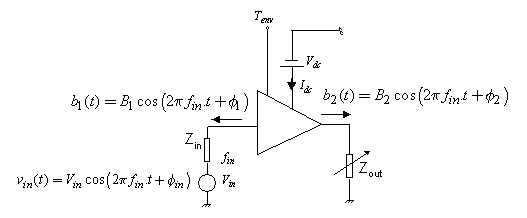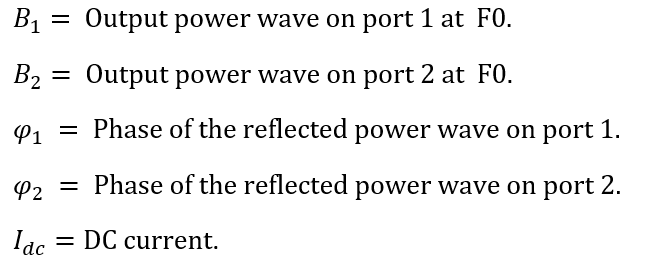B-HF model
Bilateral type model: ie it considers load and source impedance variations.
Model with high frequency electrical memory: i.e. that it considers only the frequency dispersion caused in the operating bandwidth of the amplifier; it ignores the dispersion caused by the dynamics of the polarization circuit and the thermal effects.
Mathematical description.
The extraction process of the electrical model consists in approximating the Sij in power (by Splines) and in frequency ("Polynomial function" or "Poles and Residues") for three different load impedance configurations (TOS <1.5).
For more details one can consult the references:
Progress for behavioral challenges, E. Ngoya, et al.
Identification principle.
The HPA-B-HF model is identified from CW load-pull measurements. This corresponds roughly to multiply the principle of extraction of the unilateral model HPA-U-HF on several load impedance.
The model HPA-B-HF is declined in several orders of bilaterality, ranging from 1 to 5. The more the order is important, the more the model is able to take into account of strong mismatches of load in nonlinear operating zone. It takes a minimum of 3 load impedances to be able to identify the simplest bilateral model (order 1 or linear model),. 6 impedances for order 2 (quadratic model), 10 for order 3 (cubic model), 15 for order 4 and 21 for order 5. In practice order 3 seems sufficient to offer a good accuracy on all Smith's abacus. Higher orders tend to present numerical oscillations.
Input quantities :
Output quantities :
Validity domain.
The HPA-B-HF model has the same properties as the HPA-U-HF model for frequency dispersion. It therefore takes into account only the dispersive effects present in the amplifier band and ignores other memory effects such as those due to polarization or heating. On the other hand it allows the taking into account of the changes of impedance of load and source.




